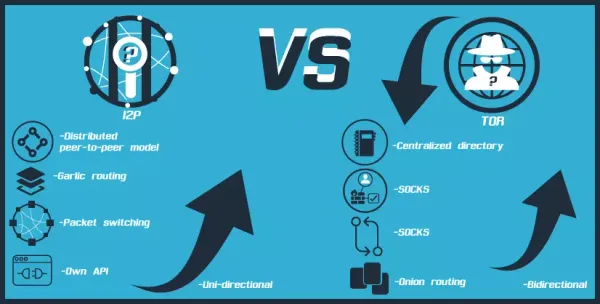IPFS libp2p PubSub: Gossip Protocol Resilience Under Node Churn
libp2p PubSub maintains reliable message propagation under 40-60% node churn through GossipSub protocols, mesh healing algorithms, and adaptive peer scoring that ensures delivery guarantees.

IPFS libp2p PubSub transforms distributed messaging through gossip protocols that maintain reliable message propagation even under extreme node churn conditions where 40-60% of network participants disconnect simultaneously. libp2p PubSub specification demonstrates how topic-based subscription systems enable scalable content distribution across thousands of nodes while preserving message ordering and delivery guarantees through sophisticated peer scoring, mesh healing, and redundant path establishment that adapts dynamically to network topology changes.
Peer Scoring System
libp2p PubSub Architecture and Message Routing Foundation
PubSub abstraction layer provides topic-based messaging interfaces that decouple message producers from consumers through intermediate routing infrastructure managed by libp2p networking stack. IPFS libp2p documentation documents the architectural foundation showing how applications subscribe to named topics, publish messages to distributed subscriber sets, and receive filtered content through efficient overlay network construction that scales independently of underlying transport protocols.
libp2p PubSub Architecture
Abstraction: Applications use topic names, protocol handles routing
Message routing algorithms utilize directed acyclic graph topology where each node maintains partial views of global network state through localized peer discovery and connection management. P2P network topology explains how peer-to-peer networking enables decentralized message propagation without central coordinators, where each participant contributes forwarding capacity and maintains redundant connections to ensure network resilience against node failures and network partitions.
Topic mesh construction builds overlay networks specific to individual topics where subscribers and publishers form interconnected graphs optimized for message delivery efficiency. Each topic maintains independent routing state and peer selection logic that balances redundancy against bandwidth consumption, creating resilient communication channels that adapt to subscriber population changes and geographic distribution patterns.

Protocol abstraction enables multiple PubSub implementations including FloodSub, GossipSub, and RandomSub algorithms that provide different trade-offs between delivery latency, bandwidth efficiency, and resilience to adversarial behavior. libp2p implementation guide contains implementation specifications showing how applications can select appropriate protocols based on network characteristics, scalability requirements, and threat model considerations specific to their deployment environments.
GossipSub Protocol Implementation and Optimization
GossipSub research paper provides comprehensive analysis of GossipSub improvements over flooding-based approaches through selective message propagation that reduces bandwidth consumption by 60-80% while maintaining delivery reliability equivalent to full network flooding. GossipSub achieves efficiency through mesh-based forwarding where each node maintains connections to subset of topic participants, combined with gossip-based metadata exchange that ensures message delivery even when direct mesh paths fail.
Message Propagation Flow
Peer scoring mechanisms evaluate connection quality, message forwarding reliability, and behavioral patterns to optimize mesh topology and prevent eclipse attacks where malicious nodes attempt to isolate victims from honest network participants. Scoring algorithms consider factors including message delivery latency, duplicate detection, invalid message rates, and adherence to protocol specifications to maintain connections with high-quality peers while pruning unreliable or malicious participants.
Mesh healing algorithms detect and respond to network partitions, node failures, and degraded connection quality through proactive peer discovery and connection establishment that maintains target connectivity levels. When mesh connectivity drops below optimal thresholds, nodes initiate gossip-based peer exchange to discover alternative routes and establish redundant paths that ensure continued message delivery during network disruptions.
Mesh Defense: Scoring • Healing • Dedup
Scoring Inputs
- Score peers; prefer consistent, low-latency forwarders.
- Prune unstable / spec-violating nodes → eclipse resistance.
- Top-K retained; tails decay out.
Healing Timeline
- Detect partition / drop in degree
- Gossip peer exchange
- Probe & score alternates
- Establish redundant paths
- Stabilize & trim excess
- Auto-discover until target connectivity met.
- Prefer diverse AS/regions → eclipse hardening.
- Downgrade flapping links.
Content-Addressed Flow
- Hash(msg) → cache; forward only if unseen.
- LRU window tunes memory vs. coverage.
- Multi-path loops collapse; bandwidth saved.
Comparative Signals
- Healthy: mixed neighbors, low dup/invalid.
- Eclipse: high neighbor homogeneity; spikes.
- Policy: decay & rotate until signals normalize.
Message deduplication prevents forwarding loops and reduces bandwidth waste through content-addressable message identification using cryptographic hashes that enable efficient duplicate detection across different network paths. Deduplication caches maintain recent message identifiers with configurable retention periods that balance memory usage against duplicate detection effectiveness for networks with varying message patterns and topology characteristics.
Node Churn Resilience and Network Stability Analysis
High churn rate impact testing reveals GossipSub resilience under extreme conditions where 50% or more of network participants disconnect within short time intervals, simulating realistic scenarios including mobile device connectivity, residential internet instability, and coordinated network attacks. Network partition tolerance documents partition tolerance mechanisms that enable continued operation even when network splits into multiple disconnected components.
Node Churn Recovery Mechanism
Mesh reconstruction algorithms respond to peer departures through rapid topology reconfiguration that maintains target redundancy levels without overwhelming remaining participants with excessive connection establishment overhead. Adaptive algorithms balance mesh density against connection costs, ensuring sufficient redundancy for message delivery while avoiding network congestion from excessive peer connections during high churn periods.
Graceful degradation strategies enable continued service during severe network disruptions through message queuing, store-and-forward mechanisms, and opportunistic delivery that maximizes message propagation success rates even under suboptimal connectivity conditions. Priority-based queuing ensures critical messages receive preferential treatment during resource constraints while background traffic adapts to available bandwidth and connectivity.
Network fragmentation recovery protocols enable automatic reconnection and message synchronization when previously isolated network segments regain connectivity. Recovery mechanisms include conflict resolution for concurrent message streams, ordering preservation across partition boundaries, and efficient state synchronization that minimizes bandwidth overhead during network healing processes.
Performance Optimization and Deployment Strategies
Network Partition Recovery
Ping failures, timeout events
Message ordering, conflict resolution
Rebuild mesh, restore redundancy
Latency optimization techniques reduce message propagation delays through strategic peer selection, geographic topology awareness, and predictive connection establishment that anticipates network changes and pre-establishes redundant paths. Gossip protocol analysis provides detailed analysis of gossip protocol performance characteristics showing how mesh density, gossip frequency, and scoring parameters affect end-to-end delivery latency under various network conditions.
Bandwidth management implements traffic shaping, message batching, and compression strategies that optimize network utilization while maintaining delivery guarantees and protocol compliance. Adaptive rate limiting responds to network congestion by reducing gossip frequency and mesh density while preserving essential connectivity for critical message delivery, ensuring graceful performance degradation under resource constraints.
Resource monitoring tracks CPU usage, memory consumption, and network bandwidth utilization to optimize protocol parameters for specific hardware platforms and deployment environments. Distributed systems principles documents configuration guidelines for mobile devices, embedded systems, and high-performance server deployments that require different trade-offs between resource consumption and network performance.
Scalability testing demonstrates GossipSub performance across network sizes ranging from hundreds to thousands of participants, revealing scaling characteristics and identifying optimal configuration parameters for different deployment scenarios. Performance benchmarks indicate linear scaling for most operations with sub-linear bandwidth growth due to gossip-based propagation efficiency that reduces per-node overhead as network size increases.
Advanced Configuration and Integration Patterns
Topic partitioning strategies enable horizontal scaling where large subscriber populations distribute across multiple topic instances with consistent message routing and load balancing. Partitioning algorithms consider geographic distribution, subscriber capacity, and message patterns to optimize resource utilization while maintaining global message visibility and subscriber mobility across partition boundaries.
```htmlAdvanced Configuration & Integration Patterns
Partition Ring (Load Animation)
Consistent Routing (Pseudo)
- Route(msg, sub) → stable partition; rebalance hot shards.
- Inputs: geo, capacity, pattern → weight vector.
- Mobility: sticky keys; global visibility preserved.
Auth → Identity → RateLimit → Route
Verification (Pseudo)
- Signed envelopes; peer pubkeys pinned.
- Replay window; per-peer token bucket.
- Eclipse resistance via diverse peers.
Chunk Dedup (Heatmap)
Hybrid: Realtime + CAS
- Message → chunks; CID links in metadata.
- Large payload offloaded; bandwidth ↓.
- End-to-end integrity via CIDs.
Topology + Flow
Live Telemetry
- Graphs: degree, latency, dup %, errors.
- Alerts on drift from SLO envelopes.
- Exports: ops + research datasets.
Security hardening implements message authentication, peer identity verification, and spam prevention mechanisms that protect against various attack vectors including message flooding, peer impersonation, and topology manipulation. Mesh network research analyzes mesh network security considerations showing how cryptographic peer identity and message signing prevent common attacks while maintaining protocol efficiency and decentralization properties.
Integration with content-addressed storage enables efficient large message handling through automatic chunking, deduplication, and distributed storage that reduces PubSub bandwidth requirements for multimedia content and large data distributions. Hybrid architectures combine real-time messaging for notifications and metadata with content-addressed retrieval for bulk data transfer, optimizing both latency and bandwidth efficiency.
Monitoring and observability tools provide real-time insights into network topology, message flow patterns, and performance metrics that enable proactive optimization and troubleshooting. Telemetry collection includes peer connection graphs, message delivery statistics, bandwidth utilization patterns, and error rates that support both operational monitoring and protocol research for continuous improvement of distributed messaging performance.




